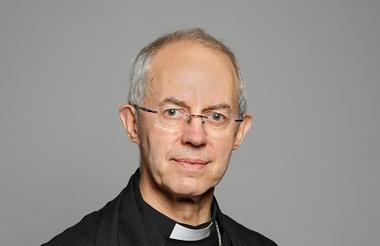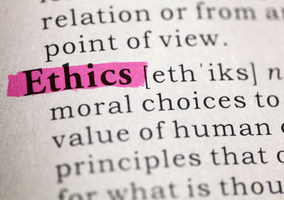Shortly before Christmas, the Children’s Society, whose official name is the Church of England Children’s Society, issued a public statement declining to accept a donation from its own president, the outgoing Archbishop of Canterbury, Justin Welby.
This is an interesting case study for the Charity Commission’s guidance on when it is permissible to decline a donation. It also throws up questions about whether the charity should continue to include the Church of England in its name.
I write as a continuing admirer and erstwhile unpaid adviser to the Children’s Society, a former staffer of a previous Archbishop of Canterbury and a former board member of the Charity Commission.
Association with the church
The charity said in its public statement: “The Children’s Society is deeply committed to supporting the survivors of abuse, and this means that accepting the donation would not be consistent with the principles and values that underpin our work.”
The statement added how shocked the charity had been by the findings of the Makin Review into the abuse committed by John Smyth, which led to the resignation of Archbishop Welby.
There is no mention in this statement of any support, encouragement and kindness towards the charity that the archbishop may have shown during the last 11 years as its president. This is consistent with the charity’s latest annual report, where there is not one word of acknowledgement of the support of archbishops, bishops, churches and their congregations, or church schools, which continue faithfully to support the charity through special collections and Christingle services.
A close association with the Church of England and the Christian faith was part of the DNA of the charity for many decades and the bedrock of its support, and many church people continue to regard it as especially beloved. But the secularisation of society has eroded the relationship for some years, and safeguarding scandals affecting the Church of England pose acute dilemmas for a charity with the denomination in its name.
The charity has become a bold, campaigning organisation, standing alongside the most multiply disadvantaged and abused children when others have given up on them, so solidarity with survivors of abuse is a crucial, even overriding, value.
Legal considerations
Against that background, let us consider the Charity Commission guidance. The starting point is that a donation should be accepted. It should be declined only if the risks to the charity and its mission of accepting it are serious enough to outweigh the presumption in favour of accepting the donation and cannot be managed. The risks of declining the donation need to be taken into account, too.
The key risk in this case of accepting a donation, if it came to widespread public attention, might be perceptions of colluding with someone associated in the public mind with failure to prioritise the prevention of child abuse.
Perceived willingness to pocket the donation rather than show solidarity with survivors of abuse could be a blow to the reputation and integrity of the charity, especially in the eyes of its abused beneficiaries.
On the other hand, major risks of publicly declining the donation include: upset and anger in the church; possible effects on the support currently offered by church individuals, congregations, schools and hierarchy; questions raised about the true character and identity of the charity; and possible concerns amongst a wider public of what might be perceived as a brutal insult or gratuitous virtue-signalling.
Why refuse publicly?
One question the case raises is whether accepting a donation from your own longstanding president as a sign of his esteem for the charity – if it became public – would be seen as an act of collusion with his alleged failures and a slap in the face for grieving survivors.
If this question could reasonably be answered “yes”, why couldn’t this risk be managed? In particular, why should acceptance of this donation come to widespread public attention? And if it were, would it really be an unmanageable source of scandal to receive a donation from your own president?
Now looking at the risks of declining the donation, could not the risks of declining the donation have been better managed? The obvious way would be to explain privately to the archbishop that although the intended donation was appreciated, along with all the other support given by him over the years, the risks to the charity of accepting the donation at the present time were real and the donation could not be accepted. That way, all the downside risks of proactively and publicly refusing the donation would be avoided.
So why did refusing the donation have to be made public by issuing a statement, with all the risks that entails? I do not know what a reasonable answer is. Is it that the charity could not trust its own trustees or staff not to leak the decision? Or did it think that declining the donation was bound to become widespread public knowledge however it was handled? Or is it that the charity felt so compromised by its association with the archbishop that it wanted to take the opportunity to decline the donation in order to issue the statement as a proactive demonstration of solidarity with survivors?
It’s an interesting challenge to the commission’s guidance as to what happens if the charity could have declined it quietly without significant risk, but deliberately incurred the risks of going public in order to signal solidarity with its beneficiaries.
What conclusions may follow?
The Charity Commission will surely be asking these questions, because of complaints or because I assume they will have received a serious incident report from the charity (as specified in the guidance).
I hope that the commission will make public what they make of the charity’s answers, and what lessons for the wider sector are to be learned.
Meanwhile, the Children’s Society’s trustees have once again made it brutally clear that they are not prepared to give as much weight to the association with the church and its spiritual leaders as in the past. Its annual report contains no mention whatsoever of the church, churches, Christianity or explicitly Christian values in its vision, mission, charitable objectives, or the entire text thanking its supporters. It is totally secularised.
In that case, there is a danger of misleading the public and particularly church people who may still think that the historic association with the church remains something that is valued by the charity and is part of its distinctiveness. Not so.
Surely the time has come to remove “Church of England” from the charity’s official name and to remove the archbishops and bishops from their current status as presidents and vice presidents respectively, so that the Children’s Society can make its tremendously important contribution as a secular charity like any other, without any lingering misconceptions from the past.











